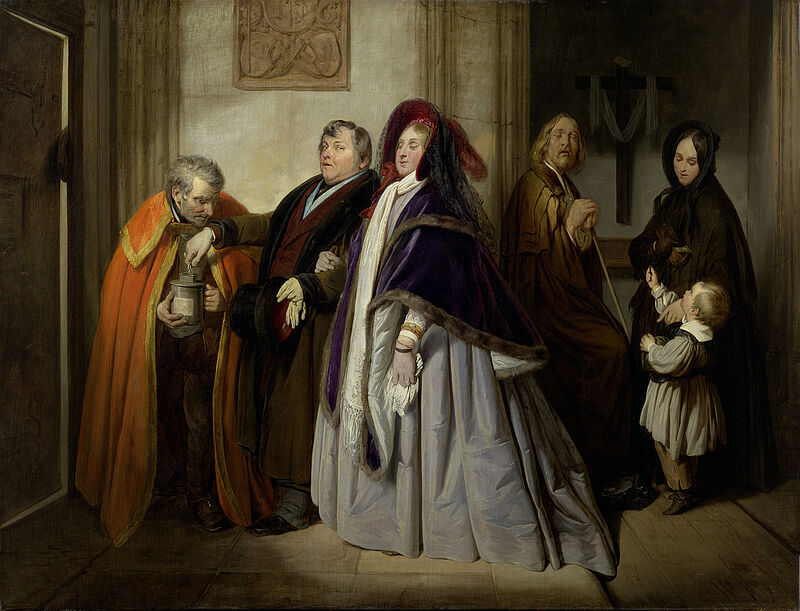The Widow’s Offering
Framesize 133.00 x 164.00 x 11.00 cm
Many of the Viennese genre painter’s narrative paintings are full of literary references. With his bold observation and satirical exaggeration, he appealed to the moral sense of his contemporaries.
Here, the artist was probably inspired by two passages from the New Testament. “Almsgiving” (Matthew 6, 1–4): “Therefore when thou doest thine alms, do not sound a trumpet before thee, as the hypocrites do in the synagogues and in the streets ...” and: “The widow’s mite” (Matthew 12, 41–44; Luke 21, 3–4): “This poor widow hath cast more in than all they which have cast into the treasury. For all they did cast in of their
abundance; but she of her want did cast in all that she had ...”
Here, a corpulent, extravagantly garbed couple are depicted demonstrating their hypocritical beneficence. The gentleman ostentatiously drops coins into the collection tin of an abjectly bowing sexton. Pushed into the background by the lady’s opulent gown, a widow urges her son to give a coin to a blind beggar. The sincere compassion of the widow, herself stricken by hardship, is emphasised by the crucifix on the wall behind. With meticulous detail in both spatial and colour effect, Danhauser achieves an unambiguous juxtaposition of extremes, using caricature in facial expressions and posture. Several sketches offer an insight into the artistic process. Noteworthy ones include a study in watercolour dated 1836 (Vienna Museum, inv. no. 18.439), and a further watercolour composition sketch dated 1838 (Albertina, Vienna, inv. no. 5.116).
OEHRING Erika: Danhauser Josef, The widow's offering, in: DUCKE Astrid, HABERSATTER Thomas, OEHRING Erika: Masterworks. Residenzgalerie Salzburg. Salzburg 2015, p. 142


